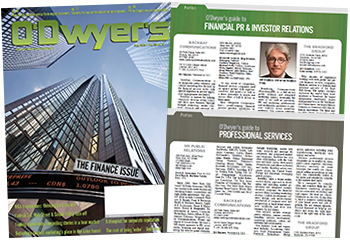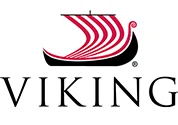 |
| David Roady |
The traditional financial communications roadmap, particularly in the case of M&A transactions, has always pointed to the importance of “day one.” Communications advisors have—justifiably, under the old paradigm—devoted their energies to preparing for announcement day, strategizing how communications would be orchestrated, how outreach to stakeholders would be managed, and above all, securing the best possible headline in the financial paper of record.
Media was the focus, and if a financial communications professional obtained the media coverage that her client hoped for, she could head home with a feeling of a job well done. All of that has now changed, and companies undertaking financial transactions that focus their attention solely on announcement day, risk catastrophe.
 |
| This article is featured in O'Dwyer's Aug. '19 Financial PR/IR & Prof. Svcs. PR Magazine. |
The financial crisis signaled a seismic shift in the way companies do business in this country in more ways than one. But lost amidst the attention on mortgage-backed securities and subprime loans was the fundamental change that took place in the financial communications industry. In response to the 2008 financial crisis, the federal government assumed an activist role in the private sector that it won’t relinquish any time soon.
That’s not to say, antitrust regulators, CFIUS or any other government body that influences the M&A landscape is new, but their influence on the successful execution of transactions has grown exponentially. Case in point: the average time to close an M&A transaction has increased from 124 days in 2010 to 212 days in 2018, and some of the most highly scrutinized transactions take longer: Bayer-Monsanto closed after 745 days, and AT&T-Time Warner closed after 600 days.
One need only examine the sectors driving M&A activity to understand why this is happening. With highly regulated industries such as industrials, energy, technology and healthcare dominating the transaction landscape, announcement day is just the first step in what may be a long process to ensuring close. And that’s what companies now look for from their communications counsel: a partner that can play a key role in ensuring certainty to close.
What does that look like? It can depend on the transaction, the jurisdictions involved and the various regulatory concerns, but fundamentally it looks like a communications firm that looks beyond the New York financial media and towards the beltway and the broader universe of stakeholders. In tactical terms, it means taking a campaign approach to M&A transactions, much like one would with issues advocacy or crisis management.
Thinking about transactions as strategic advocacy campaigns are the most effective way to ensure that deals are consummated. This campaign must be seeded on announcement day with messages that resonate beyond Wall Street; there’s nothing more challenging than attempting to walk back day-one rhetoric that touts increased pricing power at the expense of consumers.
This isn’t to say investors should be neglected, but they can’t be the only focus of a company’s communications and must be balanced with other stakeholders who can just as easily terminate a deal. M&A transactions are fundamentally longer-term plays for value creation. A day-one stock price jump is nice, but consistently improved revenue and margins two years down the road is nicer.
Building an advocacy campaign around a transaction requires taking a unique approach to every client, but there are three guiding principles that can inform a successful communications program.
Companies and their advisors must map their key influencers and conduct coordinated, regular outreach to them. This requires going a level deeper than, say, finding lawmakers on a congressional map that are responsible for districts touched by a particular deal. Companies need experts who understand what those officials’ priorities are, what issues their committees are examining, and what outside groups might exert influence that could positively or negatively impact a deal’s ability to close.
For example, if a company was acquiring a competitor in the agricultural space, it would need to not only communicate with members of the House Committee on Agriculture, but also influential industry groups and farmers who have the willingness and capability to make their voices heard on Capitol Hill.
Companies should always look to secure third-party advocates who can speak to a transaction’s merits with an independent voice. It’s a given that a company will support a deal it’s seeking approval for—but having respected opinion leaders lend their support can be instrumental in ensuring close. Once again, this requires specialized expertise—to use our previous example, communicators with deep knowledge of the agricultural industry who know the key players, know what their issues are and can craft outreach strategies that will effectively garner their support.
Companies need to understand that not everyone is going to like the transaction announcement they’ve made, and need to prepare to communicate effectively in the face of opposition. This could be anything from consumer advocates to activist shareholders and, increasingly, the active fund managers playing a role in shaping M&A negotiations and creating obstacles to closing major transactions. Being able to plan for the known detractors and react to the unforeseen opponents can make or break any M&A deal.
There’s no magic bullet to ensuring that an M&A deal is closed, particularly in our increasingly uncertain political environment. But it’s critical to understand that the game has changed and that closing the book on announcement day is only the beginning of an effective financial communications strategy. Everyone likes to see their name in the Wall Street Journal—but only when the ink is dry on the final regulatory approval is a communicator’s job done.
***
David Roady is a Senior Managing Director in the Strategic Communications segment at FTI Consulting.


 FGS Global represents private equity firm Thoma Bravo as it makes a $4.6B bid for Darktrace, a UK-based cybersecurity artificial intelligence firm.
FGS Global represents private equity firm Thoma Bravo as it makes a $4.6B bid for Darktrace, a UK-based cybersecurity artificial intelligence firm.
 Edelman handles Viking Holdings, the river and ocean luxury cruise line that plans to raise $1B via an IPO priced in the $21 to $25 per share range.
Edelman handles Viking Holdings, the river and ocean luxury cruise line that plans to raise $1B via an IPO priced in the $21 to $25 per share range. Teneo is handling the initial public offering of CVC Capital Partners, one of Europe’s largest private equity firms with nearly $200B in assets under management.
Teneo is handling the initial public offering of CVC Capital Partners, one of Europe’s largest private equity firms with nearly $200B in assets under management. Brunswick Group represents Endeavor Group Holdings as it agrees to go private via its acquisition by Silver Lake technology investment firm, which is handled by Edelman Smithfield.
Brunswick Group represents Endeavor Group Holdings as it agrees to go private via its acquisition by Silver Lake technology investment firm, which is handled by Edelman Smithfield.


 Have a comment? Send it to
Have a comment? Send it to 
No comments have been submitted for this story yet.